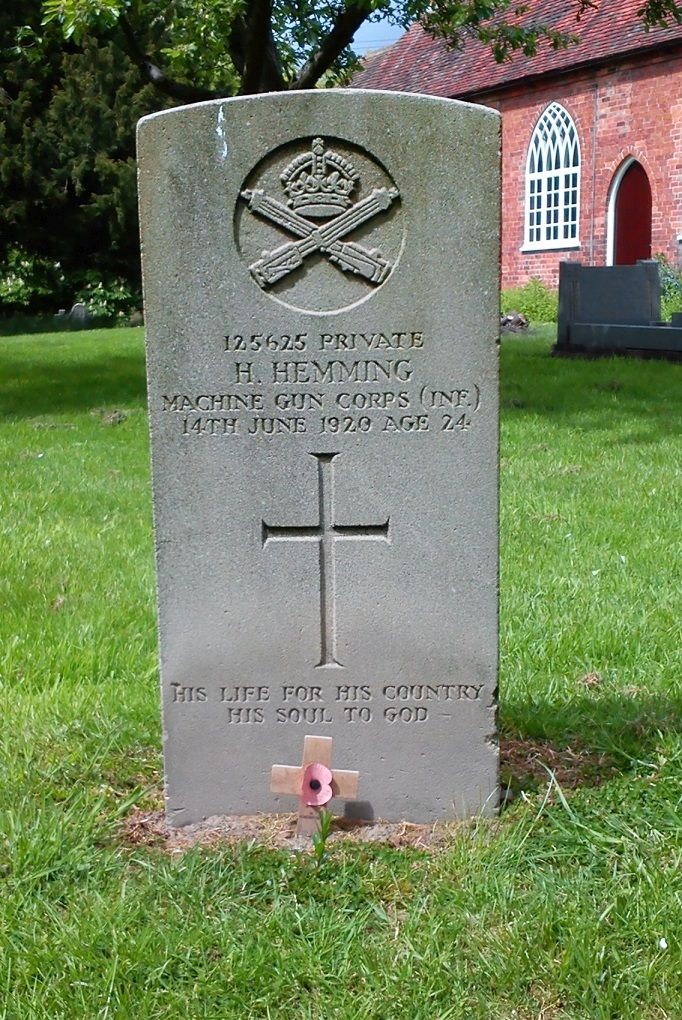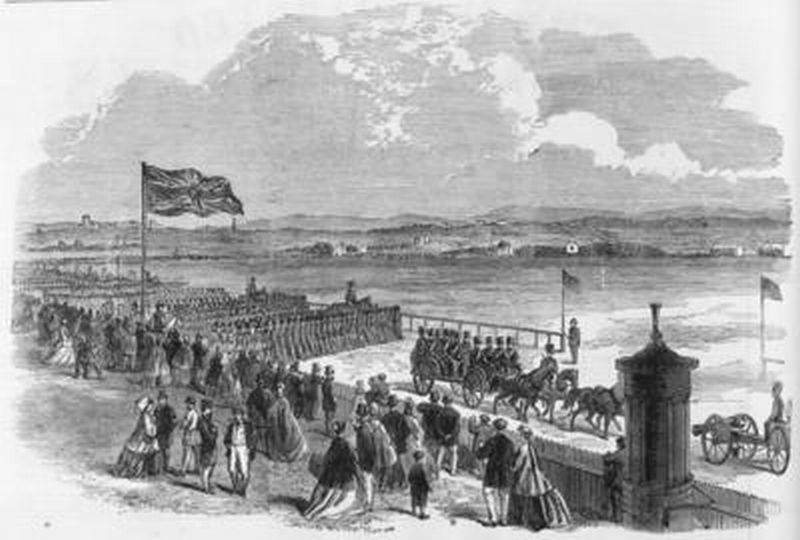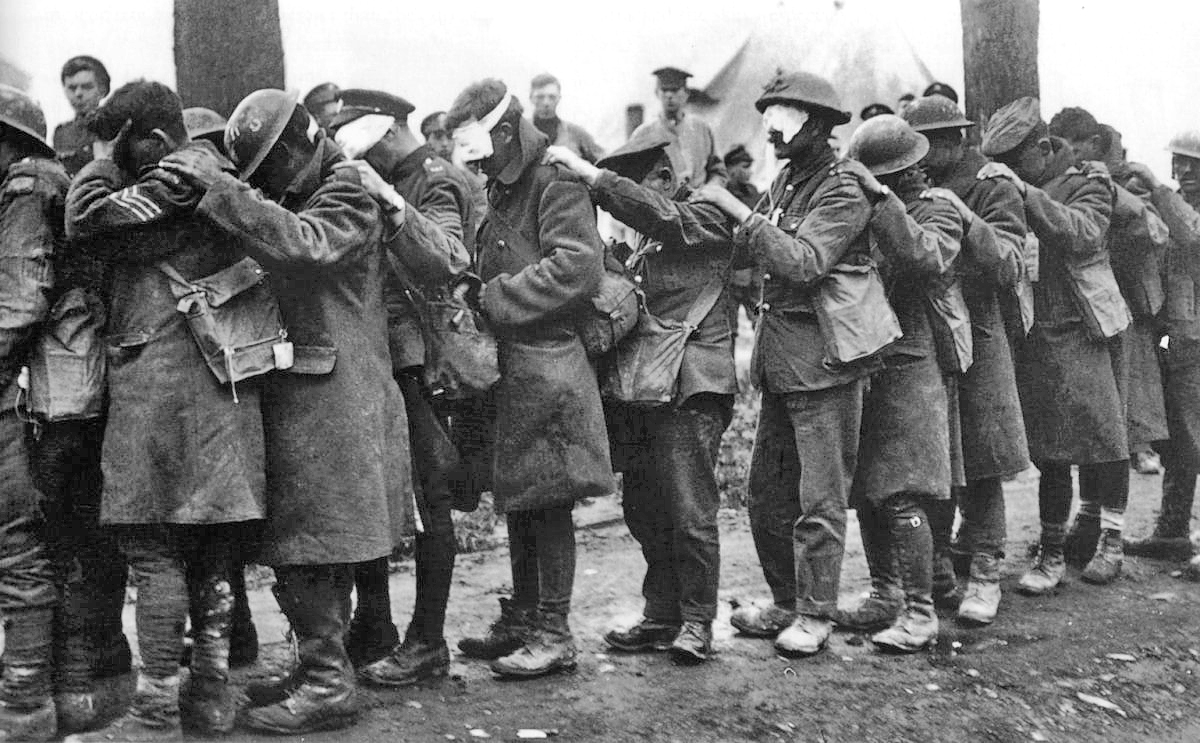|
164th (North Lancashire) Brigade
The 164th (North Lancashire) Brigade was an infantry brigade of the British Army that saw active service in the First World War as part of the 55th (West Lancashire) Division. As the 164th Infantry Brigade, it remained in the United Kingdom throughout the Second World War, as part of the 55th (West Lancashire) Infantry Division. Formation The brigade was raised in 1908 when the Territorial Force was created and was originally formed as the North Lancashire Brigade, attached to the West Lancashire Division. The brigade was composed of two Volunteer battalions of the King's Own Royal Regiment (Lancaster) and two of the Loyal Regiment (North Lancashire). First World War The division was mobilised on 5 August 1914, the day after Britain declared war on Germany, thus beginning the First World War. From late 1914 to early 1915 units of the brigade began to be sent independently overseas, mainly to France and Belgium, and were replaced by the 2nd Line units being formed, the 170th (2/1 ... [...More Info...] [...Related Items...] OR: [Wikipedia] [Google] [Baidu] |
Flag Of The British Army
A flag is a piece of fabric (most often rectangular or quadrilateral) with a distinctive design and colours. It is used as a symbol, a signalling device, or for decoration. The term ''flag'' is also used to refer to the graphic design employed, and flags have evolved into a general tool for rudimentary signalling and identification, especially in environments where communication is challenging (such as the maritime environment, where semaphore is used). Many flags fall into groups of similar designs called flag families. The study of flags is known as " vexillology" from the Latin , meaning "flag" or " banner". National flags are patriotic symbols with widely varied interpretations that often include strong military associations because of their original and ongoing use for that purpose. Flags are also used in messaging, advertising, or for decorative purposes. Some military units are called "flags" after their use of flags. A ''flag'' (Arabic: ) is equivalent to ... [...More Info...] [...Related Items...] OR: [Wikipedia] [Google] [Baidu] |
154th Infantry Brigade (United Kingdom)
The 154th Infantry Brigade (part of the 51st (Highland) Infantry Division) was an infantry brigade of the British Army division that fought during both the First and Second world wars. The brigade was raised in 1908, upon the creation of the Territorial Force, as the Argyll and Sutherland Brigade and was later redesignated as the 154th (3rd Highland) Brigade. The division was referred to as the "''Highway Decorators''" by other divisions who became used to discovering the 'HD' insignia painted wherever the Highlanders had passed through. 154th Brigade was luckier than its sister brigades of the 51st Division ( 152nd and 153rd). It was detached in June 1940 to form the mobile battlegroup "Arkforce" and was able to escape from Northern France while the rest of the division was forced to surrender at St Valery-en-Caux. However, the brigade was severely understrength by the time it returned to Britain, and in August 1940 it was reorganised and merged with the 28th Infantry Brigade ... [...More Info...] [...Related Items...] OR: [Wikipedia] [Google] [Baidu] |
Royal Artillery
The Royal Regiment of Artillery, commonly referred to as the Royal Artillery (RA) and colloquially known as "The Gunners", is one of two regiments that make up the artillery arm of the British Army. The Royal Regiment of Artillery comprises thirteen Regular Army regiments, King's Troop, Royal Horse Artillery, the King's Troop Royal Horse Artillery and five Army Reserve (United Kingdom), Army Reserve regiments. History Formation to 1799 Artillery was used by the English army as early as the Battle of Crécy in 1346, while Henry VIII established it as a semi-permanent function in the 16th century. Until the early 18th century, the majority of British regiments were raised for specific campaigns and disbanded on completion. An exception were gunners based at the Tower of London, Portsmouth and other forts around Britain, who were controlled by the Ordnance Office and stored and maintained equipment and provided personnel for field artillery Artillery is a class of heav ... [...More Info...] [...Related Items...] OR: [Wikipedia] [Google] [Baidu] |
Machine Gun Corps
The Machine Gun Corps (MGC) was a corps of the British Army, formed in October 1915 in response to the need for more effective use of machine guns on the Western Front in the First World War. The Heavy Branch of the MGC was the first to use tanks in combat and was subsequently turned into the Tank Corps, later called the Royal Tank Regiment. The MGC remained in existence after the war until it was disbanded in 1922. Formation At the outbreak of the First World War in August 1914, the tactical potential of machine guns was not appreciated by the British Armed Forces. The prevalent attitude of senior ranks at the outbreak of the Great War can be summed up by the opinion of an officer expressed a decade earlier that a single battery of machine guns per army corps was a sufficient level of issue. Despite the evidence of fighting in Manchuria (1905 onwards) the army therefore went to war with each infantry battalion and cavalry regiment containing a machine gun section of ... [...More Info...] [...Related Items...] OR: [Wikipedia] [Google] [Baidu] |
King's (Liverpool Regiment)
The King's Regiment (Liverpool) was one of the oldest line infantry regiments of the British Army, having been formed in 1685 and numbered as the 8th (The King's) Regiment of Foot in 1751. Unlike most British Army infantry regiments, which were associated with a county, the King's represented the city of Liverpool, one of only four regiments affiliated to a city in the British Army. After 273 years of continuous existence, the regiment was amalgamated with the Manchester Regiment in 1958 to form the King's Regiment (Liverpool and Manchester), which was later amalgamated with the King's Own Royal Border Regiment and the Queen's Lancashire Regiment to form the present Duke of Lancaster's Regiment (King's, Lancashire and Border). The King's notably saw active service in the Second Boer War, the two world wars, and the Korean War. In the First World War, the regiment contributed dozens of battalions to the Western Front, Salonika, and the North West Frontier. More than 13,000 men ... [...More Info...] [...Related Items...] OR: [Wikipedia] [Google] [Baidu] |
Liverpool Irish
The Liverpool Irish is a unit of the British Army's Territorial Army, raised in 1860 as a volunteer corps of infantry. Conversion to an anti-aircraft regiment occurred in 1947, but the regimental status of the Liverpool Irish ceased in 1955 upon reduction to a battery. Since 1967, the lineage of the Liverpool Irish has been perpetuated by "A" Troop, in 208 (3rd West Lancashire) Battery, 103rd (Lancashire Artillery Volunteers) Regiment. The 103rd has provided individual reinforcements to regular artillery regiments equipped with the AS-90 and L118. Liverpool's large Irish community formed the 64th Lancashire Rifle Volunteer Corps on 25 April 1860, one of many volunteer corps raised in Lancashire in response to heightened tension with France.Frederick, p. 128.Mileham (2000), p54Westlake, p. 145. The Liverpool Irish became a volunteer (later Territorial Force) battalion of the King's (Liverpool Regiment) in July 1881. As such, it fought in the Second Boer War and First World W ... [...More Info...] [...Related Items...] OR: [Wikipedia] [Google] [Baidu] |
Lancashire Fusiliers
The Lancashire Fusiliers was a line infantry regiment of the British Army that saw distinguished service through many years and wars, including the Second Boer War, the First and Second World Wars, and had many different titles throughout its 280 years of existence. In 1968 the regiment was amalgamated with the other regiments of the Fusilier Brigade – the Royal Northumberland Fusiliers, Royal Warwickshire Fusiliers and the Royal Fusiliers (City of London Regiment) – to form the current Royal Regiment of Fusiliers. History 17th–19th century Peyton's Regiment of Foot (1688–1740) By a commission dated 20November 1688, the regiment was formed in Torbay, Devon under Sir Richard Peyton as Peyton's Regiment of Foot. (The regiment's name changed according to the name of the colonel commanding until 1751.) The regiment served in the Glorious Revolution under King William III and at the Battle of the Boyne in July 1690 and the Battle of Aughrim in 1691. During the War of t ... [...More Info...] [...Related Items...] OR: [Wikipedia] [Google] [Baidu] |
Bolton Rifles
The Bolton Rifles, later the 5th Battalion, Loyal North Lancashire Regiment, was a volunteer unit of the British Army from 1859 until 1967. It served on the Western Front during the First World War, and in the Far East during the Second World War, when one battalion was captured at the Fall of Singapore. Volunteer Force The enthusiasm for the Volunteer movement following an invasion scare in 1859 saw the creation of many Rifle Volunteer Corps (RVCs) composed of part-time soldiers eager to supplement the Regular British Army in time of need. One such unit was the 3rd Sub-Division of Lancashire Rifle Volunteers formed at Bolton, Lancashire, on 2 December 1859 following meetings at Little Bolton Town Hall on 13 July and 15 November. Generally known locally as The Bolton Rifles, it was named the 27th Lancashire RVC in February 1860, by which time it consisted of four companies (at Bolton, Deane, Farnworth and Kearsley) commanded by Major William Gray, MP with a headquarters at a r ... [...More Info...] [...Related Items...] OR: [Wikipedia] [Google] [Baidu] |
Preston Rifles
The Preston Rifles, later the 4th Battalion, Loyal North Lancashire Regiment, was a volunteer unit of the British Army from 1859 until the 1950s. It served as infantry on the Western Front and in Ireland during the First World War, and as an air defence unit during The Blitz and the campaign in North West Europe during the Second World War. Volunteer Force The enthusiasm for the Volunteer movement following an invasion scare in 1859 saw the creation of many Rifle Volunteer Corps (RVCs) composed of part-time soldiers eager to supplement the Regular British Army in time of need. One such unit was the 11th (1st Preston) Lancashire RVC, formed at Preston, Lancashire, on 4 October 1859 under the command of Henry Newsham Pedder, late of the 3rd Royal Lancashire Militia and grandson of the founder of Preston's first bank.Frederick, pp. 190–1.Westlake, pp. 143–4.Beckett, Appendix VII. In February 1860 the unit absorbed two other Preston corps, the 12th (2nd Preston) RVC and the 30th ... [...More Info...] [...Related Items...] OR: [Wikipedia] [Google] [Baidu] |
King's Own (Royal Lancaster Regiment)
The King's Own Royal Regiment (Lancaster) was a line infantry regiment of the British Army. It served under various titles and fought in many wars and conflicts, including both the First and the Second World Wars, from 1680 to 1959. In 1959, the regiment was amalgamated with the Border Regiment to form the King's Own Royal Border Regiment. Previous names include the 2nd Tangier Regiment, Her Royal Highness the Duchess of York and Albany's Regiment of Foot, The Queen's Regiment of Foot, and The King's Own Regiment. History Formation Authorisation to recruit the regiment was given on 13 July 1680 to the Earl of Plymouth, an illegitimate son of Charles II; its nominal strength was 1,000 men, half recruited in London by Lieutenant-Colonel Charles Trelawny and half from the West Country. Raised for service in the Tangier Garrison, it was known as the 2nd Tangier Regiment; Plymouth died shortly after arriving in Tangier and Edward Sackville assumed command, with Trelawney formally ... [...More Info...] [...Related Items...] OR: [Wikipedia] [Google] [Baidu] |
Battle Of The Lys (1918)
The Battle of the Lys, also known as the Fourth Battle of Ypres, was fought from 7 to 29 April 1918 and was part of the German spring offensive in Flanders during the First World War. It was originally planned by General Erich Ludendorff as Operation George but was reduced to Operation Georgette, with the objective of capturing Ypres, forcing the British forces back to the Channel ports and out of the war. In planning, execution and effects, Georgette was similar to (although smaller than) Operation Michael, earlier in the Spring Offensive. Background Strategic developments The German attack zone was in Flanders, from about east of Ypres in Belgium to east of Béthune in France, about south. The front line ran from north-north-east to south-south-west. The Lys River, running from south-west to north-east, crossed the front near Armentières in the middle of this zone. The front was held by the Belgian Army in the far north, by the British Second Army (under Plumer) ... [...More Info...] [...Related Items...] OR: [Wikipedia] [Google] [Baidu] |
Battle Of Cambrai (1917)
The Battle of Cambrai (Battle of Cambrai, 1917, First Battle of Cambrai and ''Schlacht von Cambrai'') was a British attack in the First World War, followed by the biggest German counter-attack against the British Expeditionary Force (BEF) since 1914. The town of Cambrai, in the département of Nord, in France, was an important supply centre for the German (known to the British as the Hindenburg Line) and capture of the town and the nearby Bourlon Ridge would threaten the rear of the German line to the north. Major General Henry Tudor, Commander, Royal Artillery (CRA), of the 9th (Scottish) Division, advocated the use of new artillery-infantry tactics on his sector of the front. During preparations, J. F. C. Fuller, a staff officer with the Tank Corps, looked for places to use tanks for raids. General Julian Byng, commander of the Third Army, decided to combine both plans. The French and British armies had used tanks en masse earlier in 1917, although to considerably ... [...More Info...] [...Related Items...] OR: [Wikipedia] [Google] [Baidu] |










